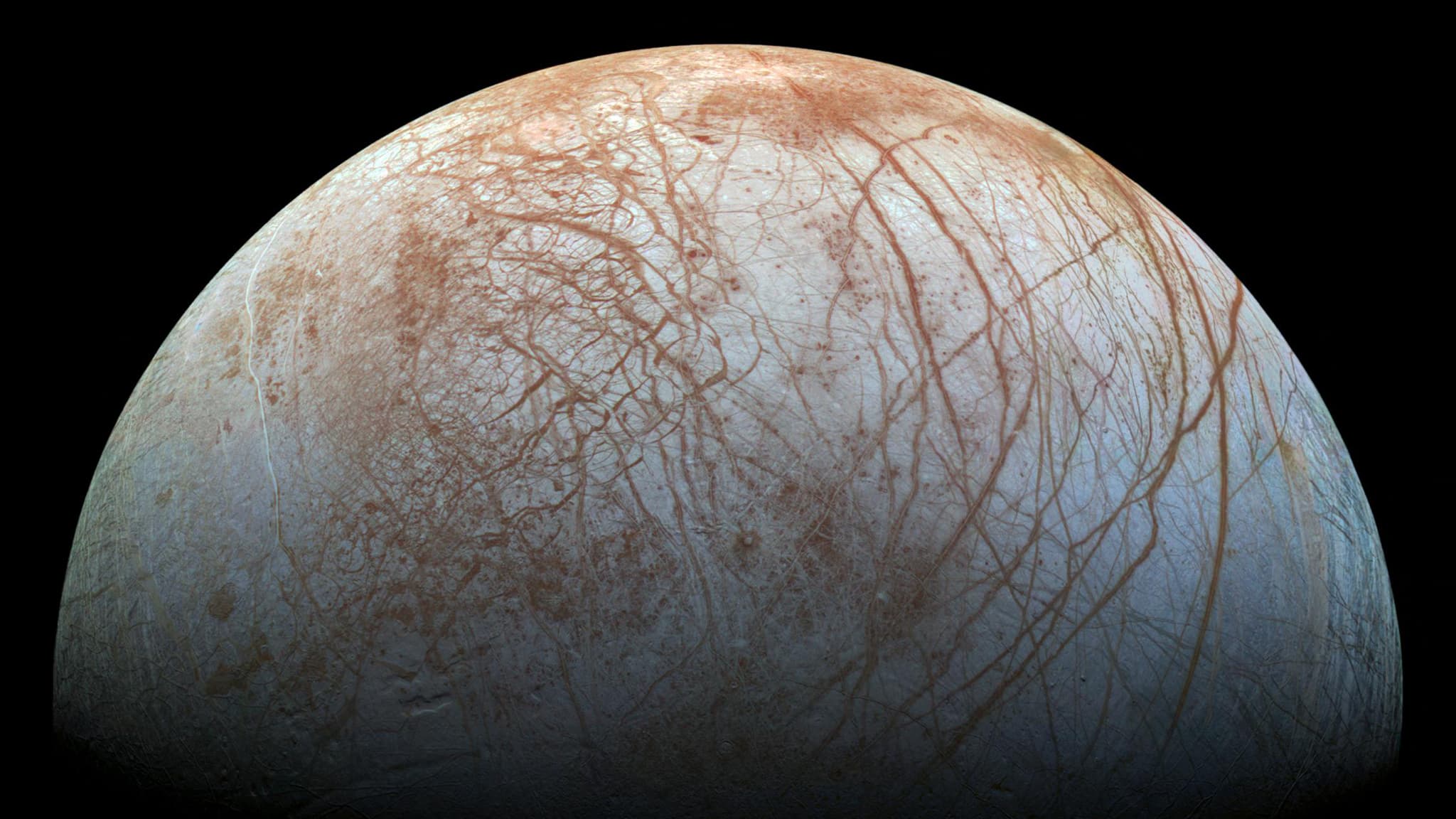
James Webb discovered that the carbon dioxide on Jupiter’s moon Europa comes from a hidden ocean
NASA’s space telescope has concluded that the carbon dioxide on Jupiter’s moon Europa came from an ocean hidden under a thick layer of ice.
Carbon dioxide detected on one of Jupiter’s moons, Europa, comes from an ocean beneath a thick layer of ice, according to data from the James Webb Space Telescope, raising hopes that this hidden water could support life.
Scientists are convinced that a vast saltwater ocean lies dozens of kilometers below Europa’s icy surface, making this moon an ideal candidate to harbor extraterrestrial life in our solar system.
However, it is difficult to determine whether this hidden ocean contains the chemical elements necessary for life to emerge. Carbon dioxide (CO2), which, along with liquid water, is one of the building blocks of this process, has already been detected on Europa’s surface, but its source has not been identified.
“Chaotic terrain”
To find out, two American teams of researchers used data from the James Webb Space Telescope, collected using an infrared observing instrument. They were thus able to map the surface of Europe, according to two studies published Thursday in the journal Science.
The largest amount of carbon dioxide is found in an area 1,800 km wide, called Tara Reggio. This area is covered by “chaotic terrain”, made up of hills and fissures, according to one study.
It’s not clear what creates this jagged terrain, but it’s possible that relatively warm water rises from the lower ocean to melt surface ice, which refreezes over time and forms new ridges.
salt
The first study used information from the James Webb Telescope to determine whether the carbon dioxide could have come from somewhere else, such as a meteorite.
Bottom line: The carbon “ultimately comes from the interior, perhaps from the inner ocean of the moon,” Samantha Trumbo, a planetary scientist at Cornell University in the US and lead author of the study, explained to AFP.
In the Taja Reggio region, scientists have also discovered the equivalent of table salt, making this area yellower than the rest of the white plains of Jupiter’s moon. An item that could also have come out of the ocean.
“Now we have carbon dioxide and salt: we are starting to know more about the internal chemistry” of Europa, the planetary scientist confirms.
Using the same James Webb data, the second study also concluded that “carbon comes from within Europe.”
Europa, one of Jupiter’s three icy moons, is the target of two major space missions that must determine whether its mysterious ocean is suitable for life to emerge.
“Future missions”
ESA’s Goss probe launched last April, and NASA’s Europa Clipper is scheduled to launch in October 2024.
It will take eight years to reach Jupiter, the giant of the solar system, and its large moons (Io, Europa, Ganymede, and Callisto), which were discovered by Galileo in 1610.
Olivier Whitasse, scientific director of the Goss project at the European Space Agency, considers the analyzes conducted by the James Webb Telescope “very interesting.” “This allows us to learn more about this ocean, which is located deep within the ice and therefore inaccessible in the current state of space exploration,” he told AFP.
The scientist adds: “It is one of the most amazing places in the solar system in the search for life other than Earth.”
He expects that when the Juice probe makes two flybys over Europe in 2032, it will collect “a wealth of new information.” Gus will also be going to check out Ganymede, which also has a subglacial ocean, and where carbon was discovered.
The Juice and Europa Clipper missions will not be able to directly find extraterrestrial life, but only determine the conditions that favor its emergence. “We leave this challenge to future missions,” Olivier Whitassi adds. In such a harsh environment, only primitive life forms such as bacteria could exist.
Most important articles

“Incurable web evangelist. Hipster-friendly gamer. Award-winning entrepreneur. Falls down a lot.”
